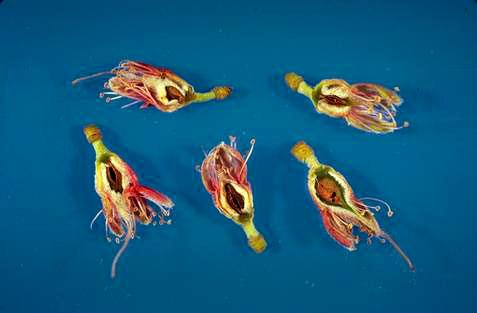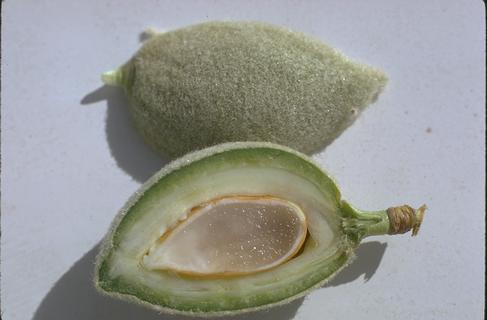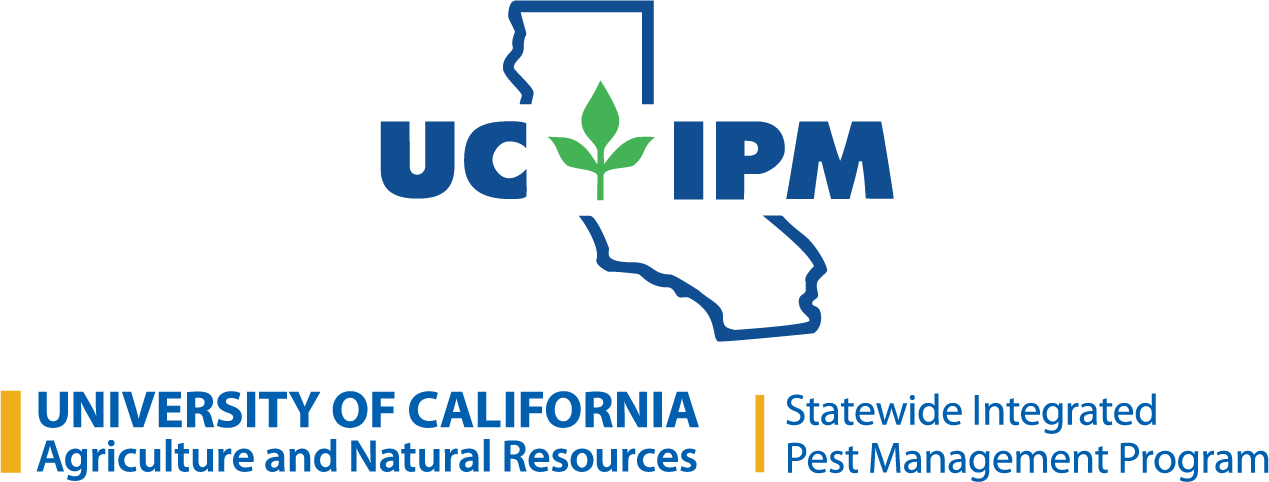A freeze or frost can damage and kill almond blossoms and young leaves and fruit (nuts).
Identification
Cold temperatures can blacken and kill plant parts of almond and cause the flower ovaries and almond nut meat to become brown and dead.

Disorder Development
Frost and freezing produce the same damage but occur under different conditions. Freezing occurs when air temperatures are 32°F or colder. Frost occurs when air is warmer than 32°F but plant tissues drop to 32°F or below because plants radiate (lose) heat into the atmosphere, especially during cool, clear nights.
In midwinter, dormant almond flower buds are relatively insensitive to cold damage down to 20°F. Sensitivity to cold injury increases gradually as the buds come out of dormancy in late winter or early spring.
When the tree blooms, sensitivity to cold temperatures greatly increases. From midbloom until fruit are the size of a pea or larger, the crop can be significantly damaged by temperatures only slightly below freezing.
Damage
Spring frost can blacken and kill flowers, flushing leaves, and young fruit. Some varieties may be more sensitive to cold temperatures than others.

Solutions
To reduce the likelihood of frost injury, keep any vegetation under trees mowed short so that the soil surface is more exposed and firm. Unless soil is soggy, irrigate trees several days before cold temperatures are expected. These practices increase the soil's ability to absorb heat from sunlight and radiate the warm at night to help keep the trees warmer.
When a freeze or frost is predicted, if trees are small enough, covering them in the evening with blankets, frost cloths, or nonplastic tarps can help keep them warmer. Leave covers open at the bottom so heat from soil can rise up to help warm the plants. Remove covers during the day.
If freezing weather is predicted, covering plants alone is of little help unless a heat source is provided. Placing incandescent lights designed for outdoor use in the canopy may generate enough heat to prevent the plants from freezing if the plants are also covered. Be sure not to create hazards of electrical shock or fire.
If trees are damaged by a frost or freeze, do not remove dead leaves or twigs until late spring or summer. Prune out dead material only after new growth develops. Pruning too early may remove live branches and increase the risk of more frost damage. An exception is limbs or trunks that are hazards and may fall; these should be promptly removed.
References
Adapted from Integrated Pest Management for Almonds Second Edition, University of California Statewide Integrated Pest Management Program (UC IPM).
